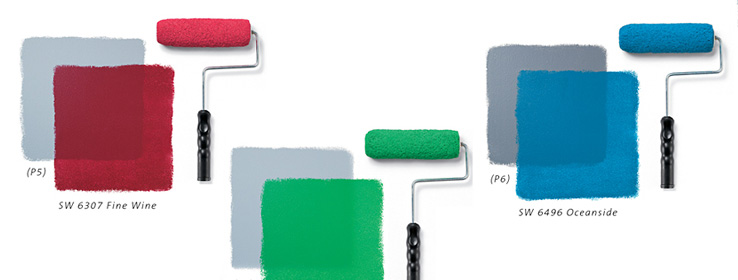When it comes to paint coverage, all colors are not created equal. Steve Revnew, director of marketing, product development at Sherwin-Williams, explains what design professionals need to know.
Q: We know that paint quality has a big impact on coverage, but what role does paint color play?
A: All colors have different degrees of opacity or transparency, which determine the way they reflect light. Opaque paint colors tend to obscure the color of the surface, while transparent colors tend to allow the surface to show through.
Q: So which paint colors are more challenging in terms of coverage?
A:Bright, clean yellows, oranges and reds. Those pigments tend to be more transparent in nature.
Q: What about a bright, clean blue?
A:It's the same issue. Any primary color that's really clean tends to be more transparent. You get more hide when you add muted colorants, such as iron oxides or black. In general, muted, grayed-off or duller colors have better hide.
Q: What should designers keep in mind when choosing paint colors?
A: Some colors can cover a surface in one coat, but many can't. If you look at some paint companies' color palettes, often the colors have been "dirtied up" for optimized hide. If a company says its paint can hide in one coat, the colors generally are not bright and clean.
Q: If you want to use a bright, clean color, what can you do to maximize hide?
A: Sherwin-Williams Color Prime® System is the best way to ensure the best possible hide. The Color Prime System includes six gray shades for tinting primers that have been matched up scientifically to optimize color.
Q: What about primer that has been tinted with the topcoat?
A: Conventional wisdom says you should use a white primer or one tinted with the topcoat color. But primer tinted to the right shade of gray creates the ideal balance of light absorption and reflection, which gives you superior hide. Bold, vivid hues reach their true color in fewer coats when applied over a gray-tinted basecoat.
Q: How should you determine which gray shade to use?
A: Just check the back of your Sherwin-Williams color chip. If a gray-shade primer is recommended, it will be coded – P1 for the lightest gray, through P6 for the darkest – to tell you which shade of gray your primer should be tinted.
The Sherwin-Williams Color Prime® System uses six gray primer shades tinted to optimize different colors.








